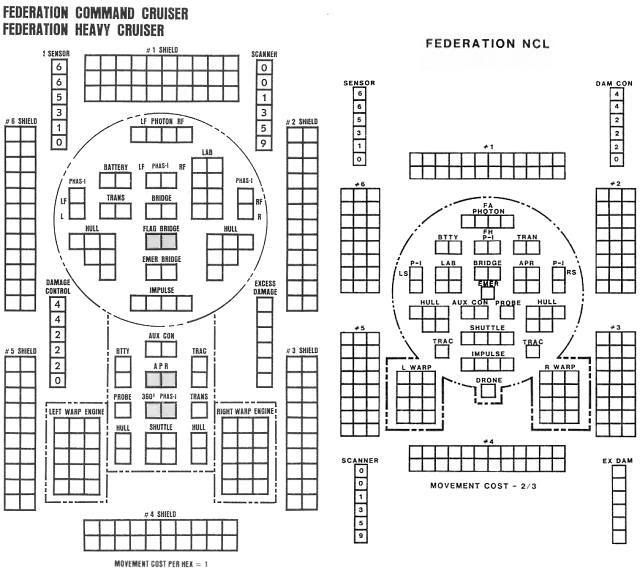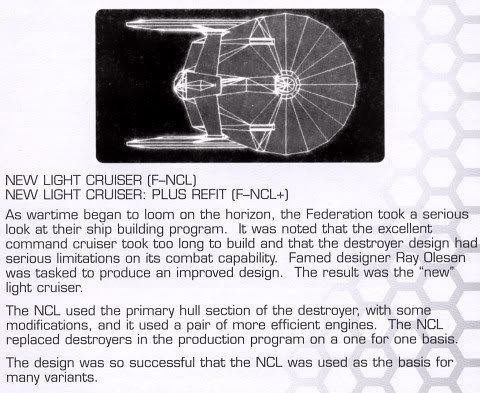I was wondering about the Constitution and Miranda Classes and wondering if there could have been some kind of parallel between them and the concept of the Hi-Low Mix used by the USAF during the 1970's due to the fact that the F-15 was too expensive to build in sufficient numbers desired, so the F-16 was developed as a lighter, cheaper alternative.
The F-15 had a (superior) radar, carried the AIM-7 (As well as the AIM-9, and an M-61 cannon), and possessed a superior top-speed. Originally the design was to possess air to ground capability and would have had even a greater air-to-ground load than the F-4 or F-16 (This was later removed to save money and to a small degree, to reduce weight).
The F-16 on the other hand originally did not possess a radar (the YF-16 -- the F-16 does), however by the time the aircraft entered service it was fitted with the APG-66 which while effective, was not as capable as the F-15's APG-63 in terms of range, the aircraft also only had AIM-9's and a gun. Originally the F-16 was to have a lower bomb capacity than it ultimately ended up with, though this was increased (This was done to increase versatility, and also for political reasons: The USAF preferred the F-15 over the F-16 and by adding more air to ground capacity to the aircraft, and the strengthening required to carry the extra loads, idea was to basically weigh it down, reducing it's thrust-to-weight ratio and increasing it's wing-loading, at least when fully loaded so the F-15 would be the better performer -- the F-16 still turned out more maneuverable in a number of respects. It's kind of ironic that by doing this they were technically shooting themselves in the foot) for a number of reasons. While the F-16 was not as fast as the F-15, it had greater range, and was far more maneuverable. It also was substantially cheaper than an F-15.
It would be interesting if the Constitution and Miranda Classes were examples of such a Hi/Lo Mix.
The Constitution being the more capable design in that it had greater scientific equipment onboard, more labs, a greater crew complement to operate all this stuff, as well as a twin-hull design allowing the primary hull to detach from the secondary (as a lifeboat originally -- that was Jeffries' idea) hull, though almost undoubtedly being more expensive or resource intensive.
In Star Trek, there was conflicting information on money, at least in one episode Kirk said something suggesting that of "earning their pay". From Star Trek IV and after it was stated that they did not use money in the 23rd (and later 24th) century. Regardless, resources are limited and the amount of resources available to build ships would be an issue.
Opinions?
CuttingEdge
The F-15 had a (superior) radar, carried the AIM-7 (As well as the AIM-9, and an M-61 cannon), and possessed a superior top-speed. Originally the design was to possess air to ground capability and would have had even a greater air-to-ground load than the F-4 or F-16 (This was later removed to save money and to a small degree, to reduce weight).
The F-16 on the other hand originally did not possess a radar (the YF-16 -- the F-16 does), however by the time the aircraft entered service it was fitted with the APG-66 which while effective, was not as capable as the F-15's APG-63 in terms of range, the aircraft also only had AIM-9's and a gun. Originally the F-16 was to have a lower bomb capacity than it ultimately ended up with, though this was increased (This was done to increase versatility, and also for political reasons: The USAF preferred the F-15 over the F-16 and by adding more air to ground capacity to the aircraft, and the strengthening required to carry the extra loads, idea was to basically weigh it down, reducing it's thrust-to-weight ratio and increasing it's wing-loading, at least when fully loaded so the F-15 would be the better performer -- the F-16 still turned out more maneuverable in a number of respects. It's kind of ironic that by doing this they were technically shooting themselves in the foot) for a number of reasons. While the F-16 was not as fast as the F-15, it had greater range, and was far more maneuverable. It also was substantially cheaper than an F-15.
It would be interesting if the Constitution and Miranda Classes were examples of such a Hi/Lo Mix.
The Constitution being the more capable design in that it had greater scientific equipment onboard, more labs, a greater crew complement to operate all this stuff, as well as a twin-hull design allowing the primary hull to detach from the secondary (as a lifeboat originally -- that was Jeffries' idea) hull, though almost undoubtedly being more expensive or resource intensive.
In Star Trek, there was conflicting information on money, at least in one episode Kirk said something suggesting that of "earning their pay". From Star Trek IV and after it was stated that they did not use money in the 23rd (and later 24th) century. Regardless, resources are limited and the amount of resources available to build ships would be an issue.
Opinions?
CuttingEdge




